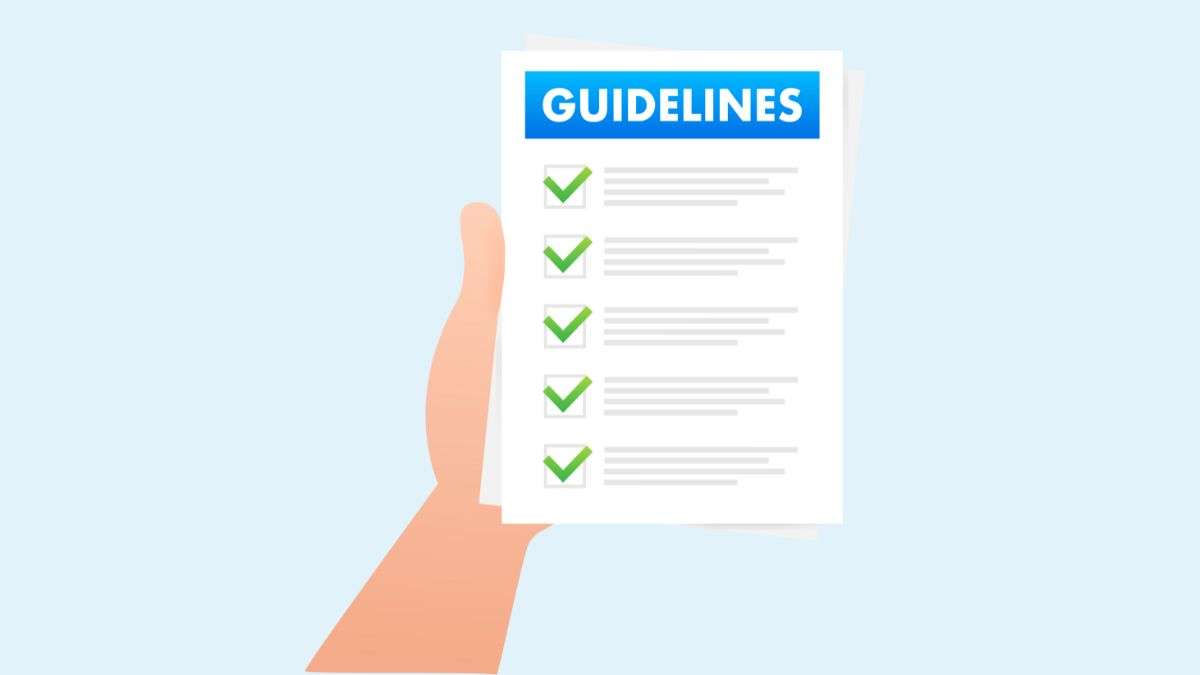Table of Contents
- Introduction
- Key Components of a Quality Journal Article
- Criteria for a High-quality Journal Article
- The Importance of Understanding the Guidelines for Quality Journal Articles
- Navigating the Academic Publishing Process
- Conclusion
Introduction
The write-up provides guidelines for quality journal articles, allowing authors and researchers to disseminate their scientific findings in reputable journals. An academic journal publisher can use this guide on their website and submission guidelines.
Academic journals play a pivotal role in the scholarly ecosystem by providing researchers a platform to disseminate their work to the broader scientific community. Getting published in reputable journals lends credibility to research and allows novel insights, methodologies, and discoveries to influence future studies.
However, crafting manuscripts that meet the rigorous standards of top-tier publications requires understanding fundamental guidelines. This introductory section will highlight why mastering academic publishing conventions is critical for emerging scholars.
Academic Publishing Furthers Scientific Discourse
Peer-reviewed journals facilitate scientific discourse by evaluating research through critical assessment from experts in the field. This vetting process ensures that published papers demonstrate sound methodologies, logical reasoning, and novel contributions that advance collective knowledge.
Consequently, work that gets published reaches a broader audience of academics compared to non-peer-reviewed channels. So, researchers seeking to maximize the impact of their scholarship must master conventions around quality and presentation.
Adhering to Guidelines
The requirements imposed by academic journals relate to multiple aspects of research reporting and writing. These include demonstrating rigorous experimental design, robust statistical analysis, comprehensive literature reviews, and proper attribution through citations.
Strict formatting and stylistic guidelines also apply. Adopting these norms signals an author’s credibility and trustworthiness to gatekeeping editors and reviewers. Researchers who fail to adhere risk rejection or exclusion from influential forums.
Mastery Enables Access to Key Platforms
Ultimately, publication in prestigious journals provides the best avenues for work to shape thinking and practices in a field. Researchers can master conventions around quality and presentation and position themselves to share provocative insights with engaged audiences of specialists.
Additionally, citations and download metrics conferred by well-regarded periodicals enable scholars to quantify the reach and influence of their output. This opens doors to career advancement, research funding, collaborations, speaking engagements, and other opportunities.
Key Components of a Quality Journal Article
Title and Abstract
The title of a journal article is the first point of engagement with potential readers; it should be concise and informative and include keywords relevant to the subject matter for search engine optimization. The abstract follows, providing a succinct summary of the article’s content, including the research question, methodology, results, and conclusions. An effective abstract allows readers to ascertain the relevance and significance of the research quickly.
Introduction
The introduction sets the stage for the entire paper. It outlines the problem statement, research objectives, and hypotheses. This section establishes the context and significance of the research by discussing its background and the specific gap in the literature that the study addresses. A compelling introduction motivates the need for the research and explains its expected contribution to the field.
Literature Review
The literature review synthesizes relevant previous studies to provide a foundation for the new research. It demonstrates the author’s comprehensive understanding of the topic and how the current work builds upon or diverges from existing knowledge. A well-crafted review summarizes and critically evaluates past research, highlighting strengths, weaknesses, and unresolved questions.
Methodology
The methodology details the design of the study, including participants, materials, procedures, and analysis techniques. This section must be thorough and transparent to allow other researchers to replicate the study if desired. The methodology should align with the research questions and be appropriate for addressing them, thus ensuring the validity and reliability of the findings.
Results
The results section presents the findings of the study without interpretation. It often includes tables, figures, and statistical analyses relevant to the research question. The presentation should be clear and organized, enabling readers to understand the data and its implications. Raw data is sometimes included in supplementary materials to maintain the flow of the article.
Discussion
The authors interpret their findings in the discussion, explaining how the results support or contradict existing theories or previous research. This section may explore the implications of the results, consider the study’s limitations, and suggest areas for future research. The discussion should connect to the introduction and literature review to demonstrate how the study contributes to the broader field.
Conclusion
The conclusion provides a concise research wrap-up, summarizing the main findings and their significance. It restates the research question and how the study addressed it, offering a final reflection on the impact of the work. While it echoes the introduction and discussion, it should avoid introducing new arguments or evidence.
References
The references section lists all the sources cited in the article, enabling readers to locate the original works. Proper citation gives credit to previous authors and allows readers to verify the information or further explore the topic.
Each component is crucial to a journal article’s overall integrity and utility. Together, they form a coherent narrative that advances understanding and invites further inquiry into the topic under investigation.
Criteria for a High-quality Journal Article
When crafting a journal article for publication, adhering to essential criteria that define high-quality scholarship is critical. Three key elements that editors and reviewers look for include:
- Originality and contribution to the academic field
- Methodological rigor
- Clarity of communication.
Originality and Contribution to the Field
A high-impact, quality journal article makes an original contribution to its academic discipline. This means presenting novel ideas, perspectives, data, or analyses that move the field forward somehow.
The research should strive to fill conspicuous gaps in the literature, challenge existing theoretical assumptions, or apply state-of-the-art methodologies to open new vistas for exploration. Authors should contextualize their work within the broader scholarly conversation and highlight its unique additions to the collective knowledge base.
Methodological Rigor
Whether quantitative, qualitative, or theoretical, first-rate scholarship is characterized by meticulous attention to methodology. Authors should provide a detailed account of their research design, data collection protocols, and analytic strategies while demonstrating awareness of limitations and potential biases. Robustness of approach, transparency around procedures, acknowledgment of study parameters, and adherence to ethical standards are imperative.
Clarity of Communication
A hallmark of exceptional writing for academic journals is clarity and precision of language. Authors should concisely convey key messages using straightforward syntax and discipline-specific terminology where appropriate. Logical flow, coherent structure, smooth transitions between ideas, and avoiding verbose or overly complex prose are essential. Adhering to the stylistic and formatting guidelines of the target journal also signals quality.
By meeting high benchmarks around originality, rigor, and communication, authors can craft impactful journal articles that advance scholarly discourse and leave a lasting imprint on their field.
The Importance of Understanding the Guidelines for Quality Journal Articles
The quality of a journal article is intrinsically linked to the rigor and integrity of the underlying research. Robust methodologies, thorough literature reviews, and adherence to ethical standards contribute to research that stands up to peer reviewers’ and readers’ scrutiny.
Connection Between Research Criteria and Article Quality
At the core of any quality journal article is research conducted through systematic and scientifically valid processes. Studies with clearly defined research questions or hypotheses, appropriate methodological approaches, and sound data analysis are more likely to produce credible and impactful results.

Additionally, situating one’s work within existing literature and identifying critical knowledge gaps lend further credibility. In short, adherence to established research best practices directly translates to higher-quality submissions.
Impact of Robust Methodologies and Literature Reviews
Employing rigorous and defensible research methodologies is vital to yielding valid, reliable findings. This includes selecting appropriate samples, measurement tools, and analytical techniques aligned with the research questions.
Thorough literature reviews also strengthen articles by contextualizing the current work within previous knowledge and highlighting opportunities for novel contributions. Manuscripts that demonstrate these research strengths can better withstand the scrutiny of peer review.
Upholding Ethical Standards and Practices
Breaches in research ethics can undermine the quality of journal articles and damage readers’ trust. Hence, authors need to uphold ethical practices, including:
- Ensuring participant privacy and confidentiality
- Obtaining informed consent where applicable
- Disclosing and mitigating potential conflicts of interest
- Appropriately citing information sources
Adhering to ethical guidelines preserves the integrity of findings and enhances an article’s ability to contribute meaningful, responsible knowledge.
Navigating the Academic Publishing Process
Publishing an academic journal article involves several key steps, including submission, peer review, and revision. Aspiring authors must understand this process and develop strategies to navigate it effectively.
Selecting Suitable Journals
When submitting your article, carefully research and select potential target journals. Consider factors like the journal’s aims and scope, readership, and impact factor. Also, review recent publications to gauge the style and quality of articles. Shortlist journals that publish work related to your research area and that you regularly read and cite.
Understanding Journal Guidelines
Before submission, study the submission guidelines thoroughly to ensure your article meets all format, length, citations, and reference requirements. Pay close attention to details around structure, sections to include, reference limits, and formatting specifications to avoid immediate desk rejects. Study the relevant academic writing styles, such as the Chicago Manual of Style, MLA, APA, etc.
Responding to Peer Reviews
The peer review process aims to critique and strengthen your work through expert feedback. When revising based on reviews, thoughtfully consider all comments. Prepare a detailed response letter explaining how you have addressed each point. Make revisions to improve the quality and clarity of your work substantially. Be open to modifying your arguments or adding new evidence as needed.
By proactively seeking mentorship, understanding journal expectations, and embracing peer critiques, prospective authors can develop effective strategies for navigating academic publishing. This will lead to higher-quality publications and more significant contributions to scholarly knowledge.
Conclusion
After going through these guidelines for quality journal articles, you should understand the critical role of adhering to guidelines at each stage of the process. In conclusion, the journey to publishing a quality journal article is one of meticulous adherence to scholarly conventions and a commitment to excellence in research.
By ensuring originality and significant contribution, employing methodological rigor, and maintaining clarity of communication, authors can produce works that not only withstand the rigorous peer review process but also enrich the academic dialogue within their field. Understanding and following the guidelines here can serve as a roadmap for navigating the complexities of academic publishing.
While challenges such as selecting the right journal, adhering to submission guidelines, and responding constructively to peer reviews may seem daunting, they are integral to the process and contribute to the growth and development of scholars. Through this iterative process of writing, submission, revision, and eventual publication, researchers can confidently share their findings, knowing they have given due diligence to every aspect of their work.
Mastering the art of academic publishing is not solely about achieving personal milestones; it is about contributing to the collective body of knowledge that drives scientific progress and innovation. As emerging and seasoned scholars continue to engage with these practices, they uphold the standards of quality and integrity that are the hallmarks of esteemed academic literature.
